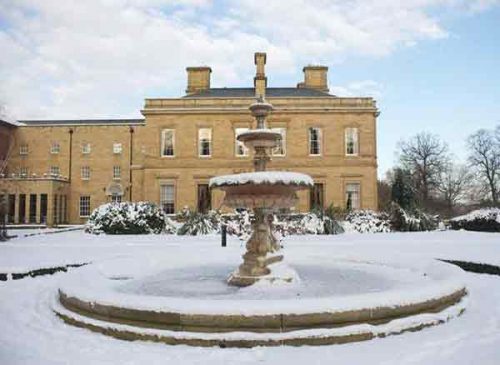Freezing Fountains! Prepare Your Water Feature for Winter
Monday, December 05 , 2016


(Image – thanks to Game Of Thrones)
(Sorry, couldn’t resist for fans of the famous TV show!)
We hope there will be no Game of Thrones White Walkers, but if you have a gorgeous garden with cast stone birdbaths and fountains you do need to get prepared before the hard frosts set in.

(Chilstone Temple with Wrought Iron Roof)
How do you prepare your garden fountain for winter?
The temperatures have plummeted this week and to avoid pump failure or worse, cracks in your stoneware we recommend you drain and clean your treasured water features.
Here are our tips keep your Chilstone fountains sparkling this winter.
Let it go

(Image -Thanks to Disney)
It is best to drain your birdbaths and fountains if you can. Cast stone is porous and absorbs water, as it freezes the water molecules expand and can cause cracks in very cold temperatures. Turn off your pump and make sure that both the tiers and the bowl is emptied.
Clean up

(Image -Thanks to Disney)
Once you have emptied out the water clean away any debris, leaves, twigs, algae etc. with a nonabrasive cloth. There may be a white crust build up in hard water areas. This can be removed with white wine vinegar. Don’t forget to flush the pump with clean water, a garden hose can be used against the outlet dislodge grime that may have built up over time. You can also use an old toothbrush to carefully clean the hard to reach areas. Regular cleaning will extend the life of your pump. Replace any worn or damaged filters. Some pumps can be disconnected and stored inside during the coldest months.
Get Cosy

Once your stone fountain is cleaned and dry we recommend covering it with either a fountain cover, fleece or polythene wrap. These keep snow and rain from clogging and cracking your birdbath or fountain. Wall mounted fountains should be drained too and depending on the size of your bowl, can be covered with a few layers or cling-film.
The best tips to stop your fountain freezing? Tennis balls!

If you can’t bear to be without your Chilstone fountain this winter, make sure you add tennis balls to agitate the water and reduce the chances of ice formation. It also moves the pressure exerted by the ice upwards against the balls, rather than sideways reducing the pressure directly on the stoneware. The heat from the pump will warm the water slightly, but it won’t stop a big freeze if the temperature plummets. The position of the fountain in your garden and how much sunshine it gets will also have an effect. If you like he frozen fountain look, you can turn off your pump and hope for the best, but be prepared that you may need to repair smaller cracks with silicone sealant once it thaws.
Get ready for Spring
Once the risk of frost has passed make sure that your fountain is topped up ready to go. Fill the bowl ¾ full. It is better to top up fountains with a little water daily, rather than adding gallons every few weeks. There are many algae inhibitors that use enzymes to slow algae growth that can be added to your fountain water without being toxic to wildlife to get your gleaming fountain ready for the year to come.

New Inspiration
If you fancy a new fountain check out the range of for a copy of our brochure call 01892 740866 or email office@www.chilstone.com. Until 23rd December we have 20% selected stocked garden ornaments.

Designed by Brand Skillings Ltd | Website managed by Weekend


